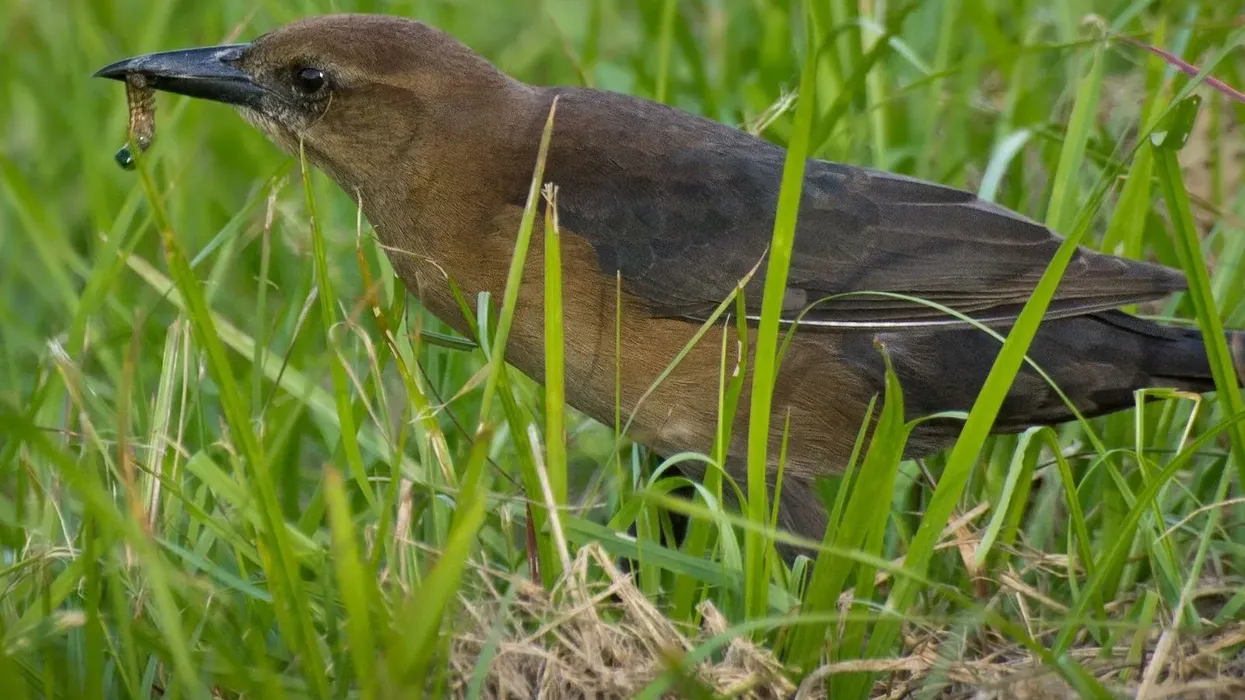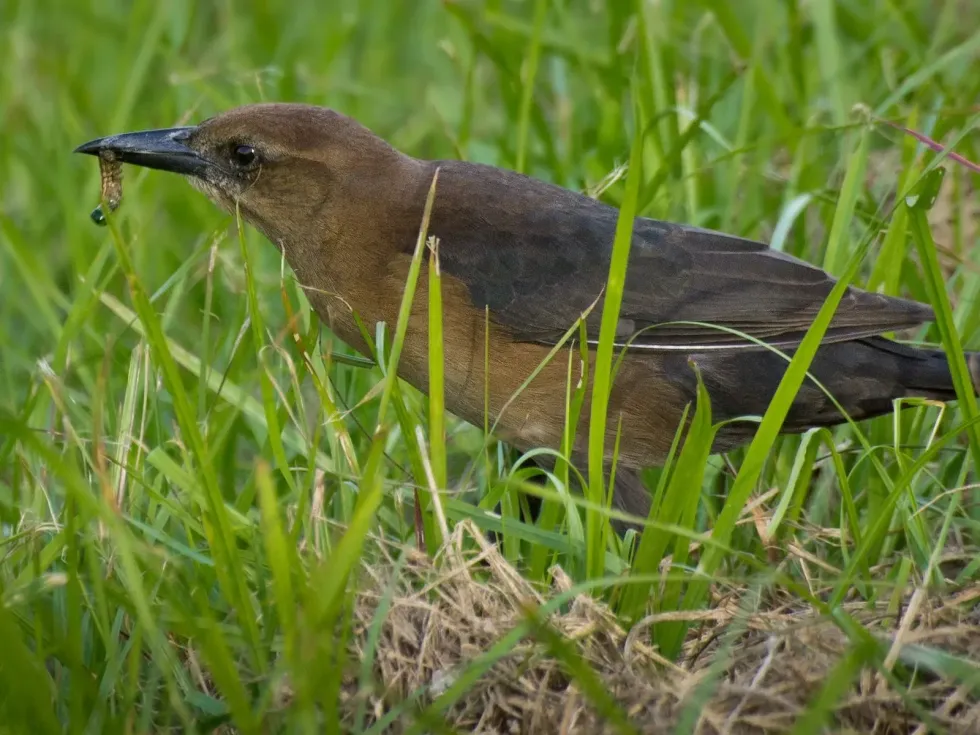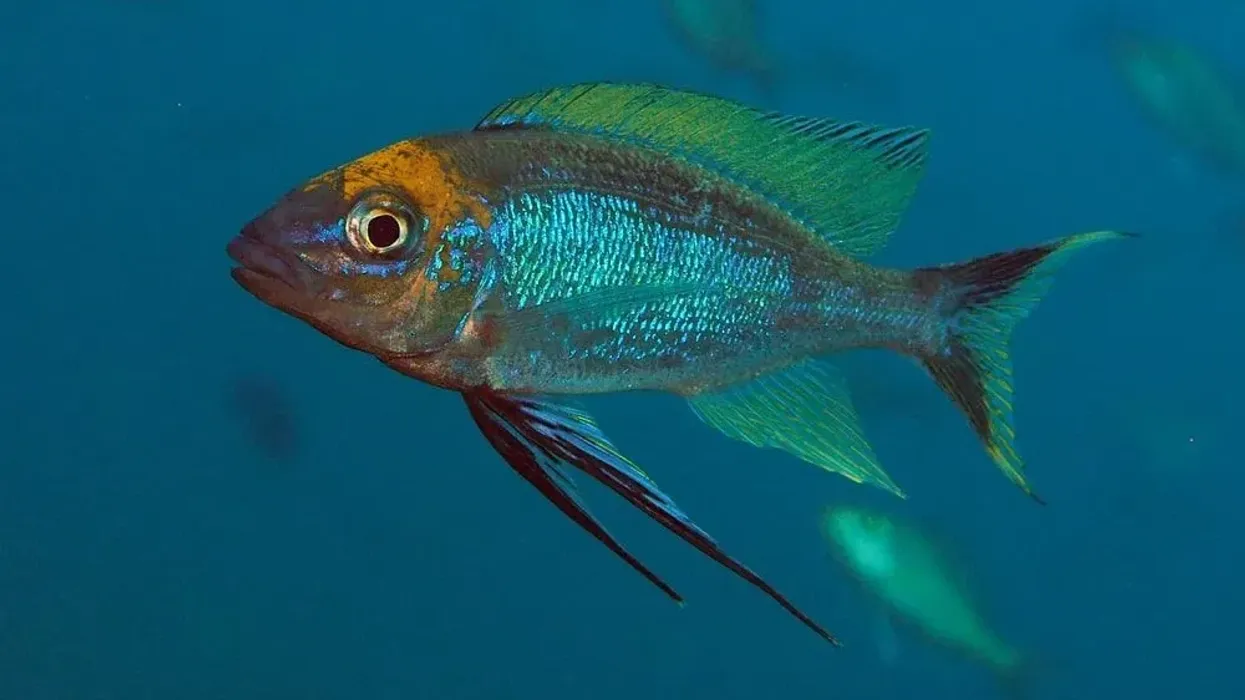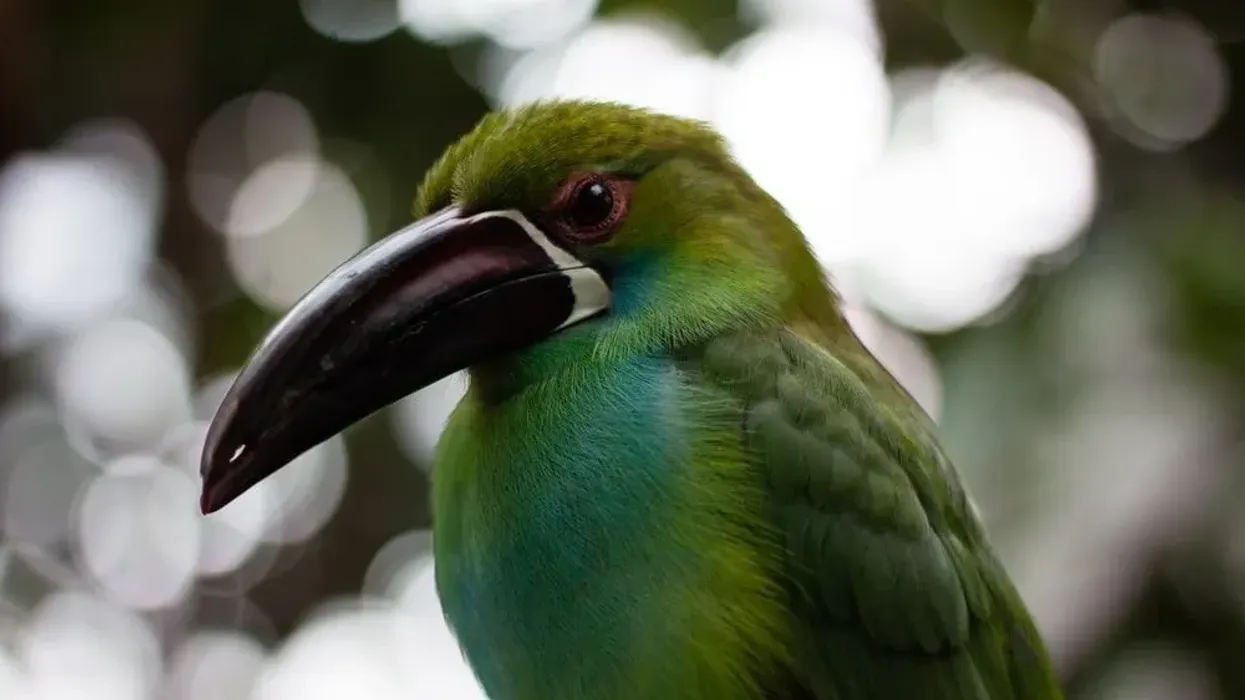The boat-tailed grackle (Quiscalus major) bird species belong to the order Passeriformes and family Icteridae. Louis Jean Pierre Vieillot, who was an ornithologist, was the first to provide a description of this blackbird.
He derived his information from a specimen found in New Orleans, Louisiana in the year 1819. Most people think that grackles are bad due to them being an invasive species.
This blackbird species can be found in several Gulf Coast cities and towns in the United States of America, especially the western Gulf Coast. It is native to the southern and eastern coasts of the country and can be found living in wetlands, salt marshes, and other marine coastal habitats.
When visiting the east coast, these blackbird species are hard to miss. Their glossy bluish-black plumage and long, keel-shaped tails make them stand apart from other grackles and blackbirds.
Their tails make up half of their body length. The bill of this bird is long and dark and is as long as its head.
The iris might be yellow or brown. Keep reading to know more about this blackbird from the Gulf Coast.
To learn about other birds, check out cockatoo and blue jay facts.
Boat-Tailed Grackle Interesting Facts
What type of animal is a boat-tailed grackle?
The boat-tailed grackle Quiscalus is a type of bird that belongs to the order Passeriformes and the family Icteridae.
What class of animal does a boat-tailed grackle belong to?
The boat-tailed grackle belongs to class Aves.
How many boat-tailed grackles are there in the world?
More studies need to be conducted to calculate the total number of boat-tailed grackles in North America.
Where does a boat-tailed grackle live?
Boat-tailed grackles can be found all along the coasts of eastern North America.
What is a boat-tailed grackle's habitat?
The boat-tailed grackle (Florida resident) can be found in inland waters. These birds mostly are residents of coastal saltwater marshes, mudflats, and flooded fields. Their habitat is always situated close to the water. Parking lots, dumpsters, and trash bins in Gulf coast cities and towns also have a significant number of boat-tailed grackles.
Who do boat-tailed grackles live with?
Grackle bird species are known to form flocks while foraging.
How long does a boat-tailed grackle live?
The boat-tailed grackles have a lifespan of about 12 years.
How do they reproduce?
The breeding habitat of the adult boat-tailed grackle birds includes swamps and coastal marshes with fresh, salt water, or even brackish water. Nesting sites are selected just above the water level where their nests are protected from flooding and also from dangerous predators like rats and snakes.
Usually, alligators can be seen in and around the marshes where the nests are located to protect the areas from the bird's predators. The nests are built by the female bird.
Grasses, sticks, sedges, strips of bark, and moss are used to make these nests which are then placed on shrubs and trees. About three eggs are laid by the adult female.
The incubation period lasts for around 13 days. The hatchlings and young birds are looked after by the female blackbirds.
What is their conservation status?
The boat-tailed grackle, Quiscalus major, species has been evaluated and listed as Least Concern by the International Union for Conservation of Nature in the Red List of Threatened Species.
Boat-Tailed Grackle Fun Facts
What do boat-tailed grackles look like?
These birds from the Gulf Coast are large in size and black in color. They have keel-shaped tails.
Males and females can be differentiated on the basis of their features. The adult male blackbirds have a dark black plumage along with brown or yellow eyes whereas the adult females have a brownish plumage, dark wings, and a tail as long as their entire body.
It has a dark bill that is as long as its head. The color of their eyes can vary from yellow to brown according to their location.
How cute are they?
These North American birds might appear to be a little intimidating at first, especially the male boat-tailed grackle due to its bluish-black plumage. However, a closer look at this species would make one realize that they are quite majestic to look at.
How do they communicate?
Similar to other grackle species, the boat-tailed grackle sound and song also has distinct squeaks and chatters. The voice of this bird and its song is harsh and the boat-tailed grackle call includes repetitive whistles, trills.
The call of a boat-tailed grackle sounds like 'kewwt-kweet', 'krsshhh-krssshh-krsssh', and 'chaak-chaak-chaak'. Their typical song is a mix of 'jeeb' notes with harsh trills.
How big is a boat-tailed grackle?
The males are larger in size than the females. The male boat-tailed grackle has a length of about 15-17 in (38.1-43.2 cm). The boat-tailed grackle female is about 10-13 in (25.4-33 cm).
Its tail is so long that the tail itself makes up half the length of the entire body. The tail of an adult is about 4.3-7.9 in (10.9-2 cm). It is twice the size of a chipping sparrow.
How fast can a boat-tailed grackle fly?
Boat-tailed bird species can fly at a speed of 28 mph (45 kph).
How much does a boat-tailed grackle weigh?
The adult male weighs about 5.8-8.8 oz (164.4-249.5 g). The adult female boat-tailed grackle usually weighs between 3.2-4.1 oz (90.7-116.2 g). A great-tailed grackle weighs almost the same.
What are the male and female names of the species?
There are no unique names that are used to refer to the adult boat-tailed grackle female and male.
What would you call a baby boat-tailed grackle?
A baby boat-tailed bird is called a chick.
What do they eat?
These birds usually can be found foraging in the marshes, mudflats, cultivated fields, floating mats as well as garbage dumps, parking lots, and beaches. The boat-tailed species diet includes a variety of crustaceans, frogs, mollusks, lizards, and turtles along with various seeds, grains, fruits, and tubers.
They usually forage for their food by walking slowly over the ground while probing at the soil. The boat-tailed grackle swoops on its prey as well.
The boat-tailed bird also has the ability to open shells of mussels by forcing an opening between the tissue and the cell. Boat-tailed grackles steal food from other large birds also at times.
Are they poisonous?
These bird species are not poisonous and not harmful to human beings. However, they might cause some harm to crops. So crops should be protected by them but apart from that, there are no serious threats from them.
Would they make a good pet?
Boat-tailed grackles, like most grackles species, are not a good choice for pets. They are wild birds and should not be domesticated. In a lot of states, it is also illegal to own such birds.
Did you know...
Food items like rice, bread, and sometimes even dog food are dunked by these North American birds in water before consuming them.
The eye color of these blackbirds is dependent on the boat-tailed grackle range which includes Florida, west of Florida, Louisiana, and west of Louisiana. The blackbirds located on the western Gulf coast have dark eyes and the ones on the Atlantic coast have eyes that are pale in comparison.
The female grackles prefer to nest in sites that are patrolled by alligators in order to keep them safe from predators like snakes and rats.
The young male boat-tailed grackles are pale and not as black as the adult ones. The young females are also pale but closely resemble the adult females and have blotches on its breast.
During the breeding season, the boat-tailed grackle follows a system known as the 'harem defense polygyny'. Females get together in areas that are generally patrolled by the alligators and the males compete with each other to become the ones to mate with the entire colony.
Despite this, DNA fingerprinting has pointed to the fact that the dominant male is the father of only a quarter of the young. The others are males that the females mate with while being away from the breeding grounds.
Why is it called a boat-tailed grackle?
The boat-tailed grackles have a distinct, long, keel-shaped tail. These long tails make up about half of the bodies of both the males and the females and form a v-shape, similar to the keel of a boat.
What's the difference between a boat-tailed grackle and a common grackle?
When it comes to common grackle vs boat-tailed grackle, there are quite a few differences that can help us in distinguishing them. The common grackle is perhaps the only grackle that is migratory.
It breeds and is a resident of the Rockies and during the winters, it moves to the eastern half of the Lower 48.
This blackbird is smaller in size than the boat-tailed grackle and also has a smaller bill and a shorter tail. The female common grackle can be differentiated from the boat-tailed grackle by the absence of buffy brown underparts below its wings.
Here at Kidadl, we have carefully created lots of interesting family-friendly animal facts for everyone to discover! For more relatable content, check out these eastern kingbird facts and Amazon parrot facts for kids.
You can even occupy yourself at home by coloring in one of our free printable birds coloring pages.








